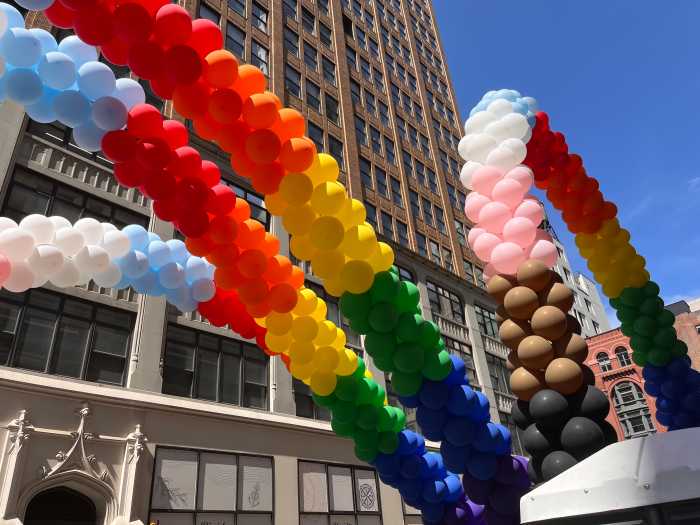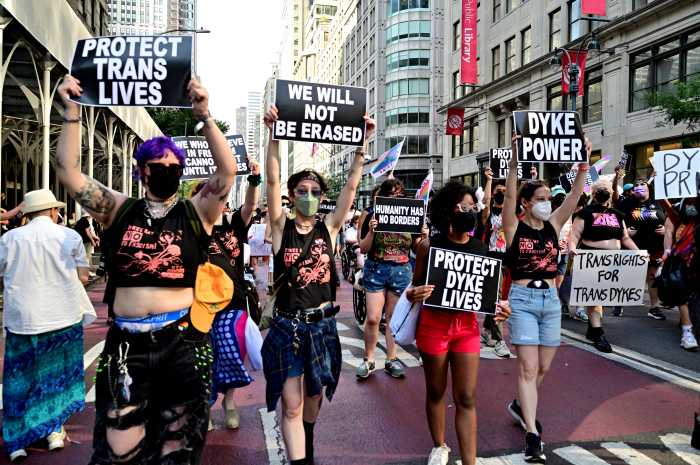An April 19 march was held in Belgrade in connection with the Lesbian Spring there. | LABRIS.ORG
On Sunday, April 19, more than 100 women took to the Belgrade streets for the first lesbian march in the entire region. The march in the Serbian capital capped off four days of the Lesbian Spring, which included photo exhibits, film screenings, discussions, workshops, and, of course, parties.
A bold action in a city where Pride marches are often banned after threats of violence and marchers are sometimes attacked, the Lesbian March included Roma women from Niš and Novi Becej and activists from the Lesbian Women's Network. Their focus was lesbian rights and lesbian visibility.
Two of the march's participants. | LABRIS.ORG
Marchers participated for a range of reasons according to an April 20 post in e-Novine. Ana Pandej, a Lesbian Spring organizer, was sick of lesbians being invisible, not just in society, but in demos for worker’s rights, women, and even Gay Pride. “It’s like we’re not even there… It’s really essential for women in general, particularly lesbians, but also straight, bi, and queer women, to be visible in public spaces.”
Zoé Gudovic, another activist with the organization, reemphasized the importance of claiming space and acknowledging the contributions of lesbians to LGBT history. “We took to the streets today to show that we are not some Western import,” she said. “We exist in this country. We are citizens of this society that we help build, and we want change. Change which will come when people understand just how much political oppression affects women, and how it's omnipresent for lesbians.”
Gudovic enjoyed the cultural events of Lesbian Spring. “We were able to see a film from Bosnia-Herzegovina about a group of female soccer players, the film “Lesbiana” from filmmaker Myriam Fougère, and we discussed different books and publications and we had the opportunity to see an exhibit of photographs of lesbians taken by lesbians.” She was impressed by how much the group of international lesbians had in common, in particular their struggles with invisibility and violence.
The Lesbian Spring was organized by a range of groups and individuals. It was timed, in part, to coincide with the presence of the Feminist Caravan, a project of the World March of Women, an international activist group.




































